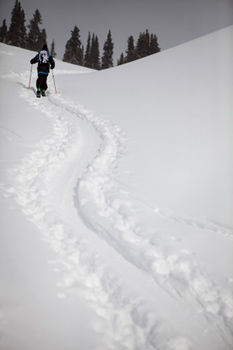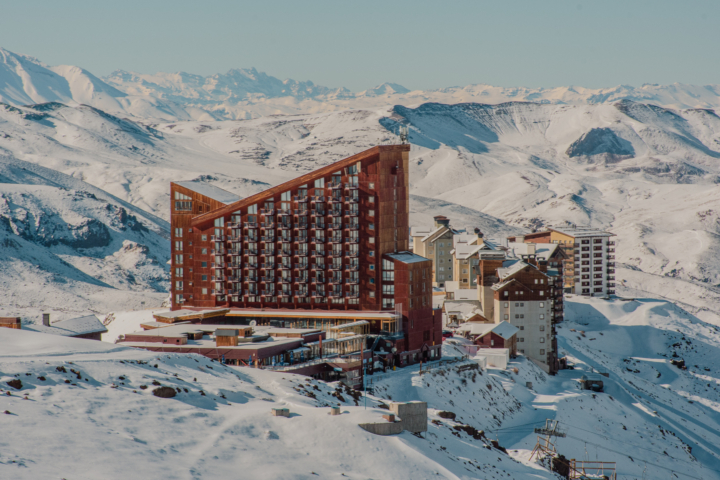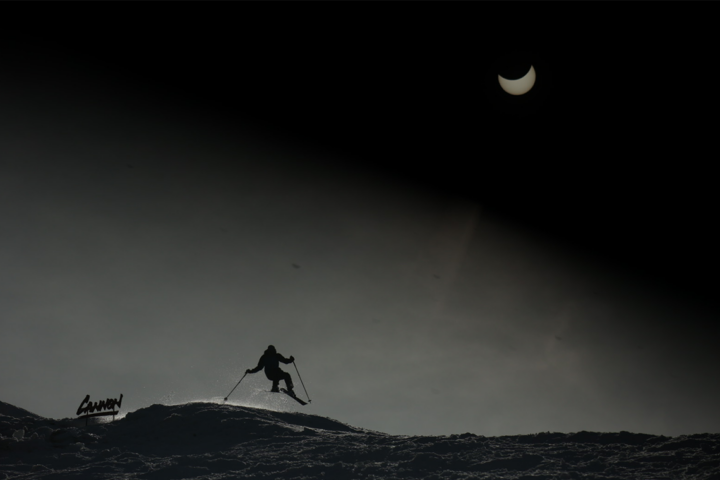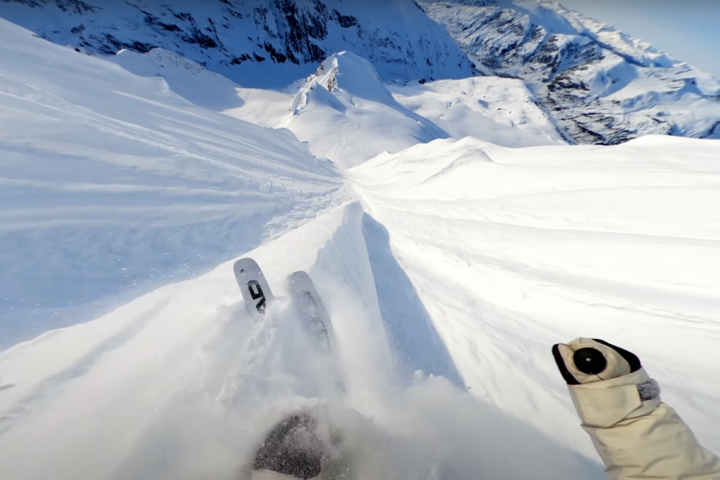The Evolution
 It wasn’t long ago that the backcountry was a place reserved for the handful of people who were brave enough to venture into unknown, uncontrolled territory, with gear produced by the small number of manufacturers that had such a pursuit in mind. These explorers were getting untracked lines day after day, not to mention stunning views and no gapers for miles. While the rest of the ski community heard how good the snow was, most were unwilling to trade in their alpine equipment for lightweight touring gear that was widely believed to be inferior when it came time to point the tips downhill. In the mind of alpine skiers, alpine-touring and the foreign-looking gear that came with it was more about walking around the mountains than charging down them. Consequently, most people without access to helicopters stuck to resort laps.
It wasn’t long ago that the backcountry was a place reserved for the handful of people who were brave enough to venture into unknown, uncontrolled territory, with gear produced by the small number of manufacturers that had such a pursuit in mind. These explorers were getting untracked lines day after day, not to mention stunning views and no gapers for miles. While the rest of the ski community heard how good the snow was, most were unwilling to trade in their alpine equipment for lightweight touring gear that was widely believed to be inferior when it came time to point the tips downhill. In the mind of alpine skiers, alpine-touring and the foreign-looking gear that came with it was more about walking around the mountains than charging down them. Consequently, most people without access to helicopters stuck to resort laps.
As it is with human nature, and specifically the ever-exploratory minds within the ski community, the time came when boundaries needed to be crossed. Ski resorts were getting crowded and powder-hungry skiers needed to go elsewhere to get their fix. While some gave in to the currently available gear, others held out for a better solution. They wanted tools that would get them up the hill and let them charge back down without worrying if their boots were going to stay in the binding. Furthermore, people needed touring boots that would perform like true alpine boots.
Cue the Marker Duke binding. The introduction of the Duke binding didn’t single-handedly change the industry but it opened a lot of people’s eyes to the possibilities. Suddenly, there was a widely available binding that could take you into the backcountry without a tech-compatible boot. BCA had released the Alpine Trekker, an accessory that would fit into an alpine binding to allow touring, but to most, this seemed more like a Band Aid than a solution. Now there was a heavy-duty option for getting up to charge back down. Some people thought it was the greatest thing ever, while other backcountry enthusiasts laughed at the weight of it. It certainly wasn’t made for ski mountaineering or touring on day after day but it was a big step forward and the industry took notice.

BCA Alpine Trekker (L) and the Marker Duke (R)
Since then, the backcountry gear progression has been interesting to watch. As the consumer always wants that unicorn piece of gear that can do it all, manufacturers from both sides of the spectrum have leaned slightly towards the center. Dynafit, known for its superlight touring gear, is now looking to appeal to the aggressive freeride consumer with the new Beast 16 binding and Vulcan boot, while typically alpine manufacturers such as Atomic and Salomon continue to evolve with touring-capable pieces, such as the Tracker and Guardian bindings, respectively.
Putting it to the Test
To keep our fingers on the pulse of this continued evolution we’ve sent editors around the globe to test out the newest gear. Sometimes it’s just what we expect and other times we’re a little surprised. In a lot of cases, when examining the new gear it’s still pretty evident which side of the table the respective company started on, though some products such as Scarpa’s new Freedom SL boot are starting to blur the lines pretty well. The bottom line is, you never really know how it will perform until you get out on it.
We recently headed out to Snowbird where we tested Scarpa’s new Freedom Series, which you can read more about here. We also sent contributor Tess Weaver over to Italy at the beginning of January for the launch of the new Dyanfit Beast 16 binding.

Hard at work on the Dynafit Beast 16 in Italy’s Dolomites
As the SIA Snow Show rolled into Denver last month, we knew there’d be a ton of other gear to review so we partnered up with Bent Gate Mountaineering out of Golden, CO to get it done. Bent Gate hosted the second annual Silverton Sick Days at Silverton Mountain in the rugged San Jaun range and we knew it would be an ideal venue to hammer down on some gear. Check out the recap and an updated photo gallery here.
Over the the next few months we’ll continue to test out all of next year’s product—check the site for updates and look forward to our 2014 Buyer’s Guide, for release in fall 2013, which will be chock full of everything you need to know about.









